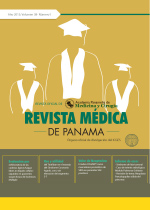Tomografía de abdomen simple en la litiasis renal y vías urinarias
Autores/as
DOI:
https://doi.org/10.37980/im.journal.rmdp.20221907Palabras clave:
tomografía de abdomen, litiasis renal, flebolitosResumen
La litiasis urinaria representa una patología importante en la práctica médica y requiere de un abordaje multidisciplinario. Su incidencia es del 10% y afecta a un grupo de edad extenso, con factores que pueden influir en su aumento en determinados lugares. Su diagnóstico aparece como hallazgo en controles rutinarios de salud o a través del síndrome de cólico renal, cuadro característico y de consulta frecuente en los servicios de urgencia. La tomografía computarizada para el estudio de la litiasis renal puede brindar información más detallada. Tiene una sensibilidad, especificidad y seguridad mucho mayor que la radiografía simple del abdomen y que la de la urografía excretora. Los hallazgos directos incluyen el cálculo en el uréter, dilatación ureteral por arriba del cálculo, signo del halo con densidad de tejido blando rodeando al cálculo y los indirectos son dilatación del sistema colector y del uréter, aumento de volumen del riñón y edema perinefrítico.
Archivos adicionales
Publicado
Número
Sección
Licencia
Derechos de autor 2022 Infomedic Intl.Derechos autoriales y de reproducibilidad. La Revista Médica de Panama es un ente académico, sin fines de lucro, que forma parte de la Academia Panameña de Medicina y Cirugía. Sus publicaciones son de tipo acceso gratuito de su contenido para uso individual y académico, sin restricción. Los derechos autoriales de cada artículo son retenidos por sus autores. Al Publicar en la Revista, el autor otorga Licencia permanente, exclusiva, e irrevocable a la Sociedad para la edición del manuscrito, y otorga a la empresa editorial, Infomedic International Licencia de uso de distribución, indexación y comercial exclusiva, permanente e irrevocable de su contenido y para la generación de productos y servicios derivados del mismo. En caso que el autor obtenga la licencia CC BY, el artículo y sus derivados son de libre acceso y distribución.






